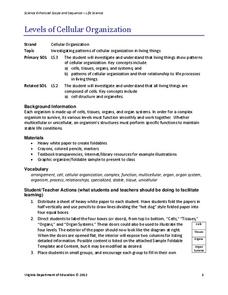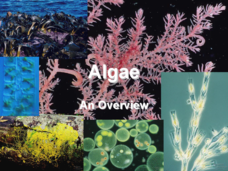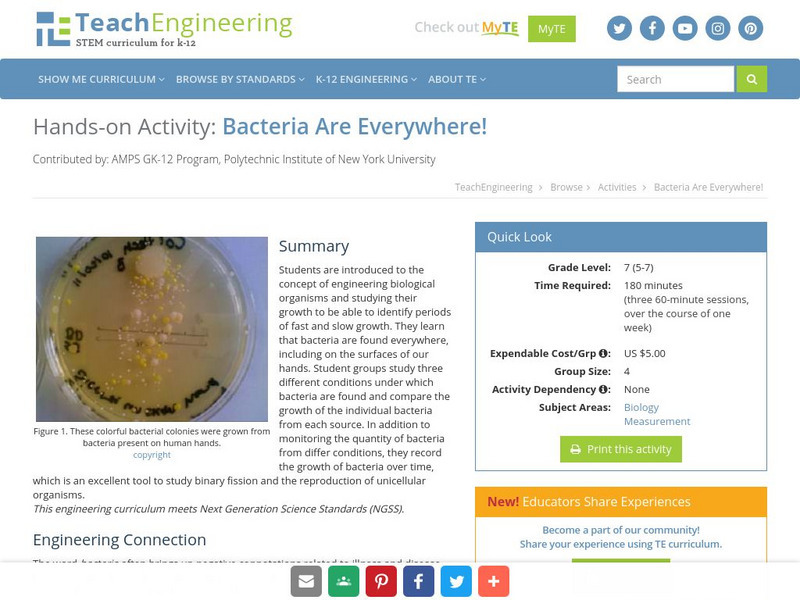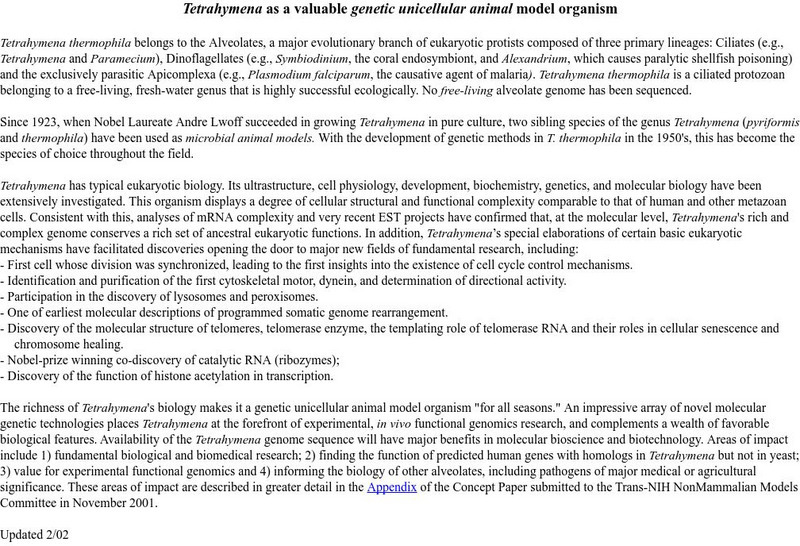Science 4 Inquiry
The Classification of Living Things
It's a classification sensation! Demystify why we classify using an inquiry activity that helps your class sort things out. Groups begin by classifying a variety of shoes before they research organisms and design their own dichotomous...
American Physiological Society
What Environmental Conditions Lead to the Hatching of Brine Shrimp?
Will changing the environment in which brine shrimp live impact their reproductive success? Young scientists get hands-on experience studying the habitat of brine shrimp in a two-week immersion lesson. The teacher's guide provides all of...
Virginia Department of Education
Levels of Cellular Organization
What an eccentric way to learn about each level of cellular organization! Allow emerging biologists to utilize white paper and create their own foldable charts to describe each level of organization in the body. You may also adapt the...
Curated OER
The Marvels of Mud
Young scientists roll up their sleeves and get a little dirty in this three-day earth science investigation. Following the scientific method, children monitor the growth of algae in pond water samples in order to determine the role that...
Curated OER
Algae: An Overview
The main characteristics and definitive features of red, green, brown, and 4 other algea are listed along with great photos and examples. The details involved with reproduction styles, and information about traits of each Phyla are...
American Physiological Society
An Inquiry into Alcoholic Fermentation
Introduce life science high schoolers to their new "best buds" yeast! Using a wide variety of materials, lab groups design an experiment that illustrates how yeast acquires the resources it needs to undergo cellular respiration. The...
Curated OER
Modern Classification
In this modern classification worksheet, 9th graders describe ways scientists determine an organism's phylogeny. Then they explain what the animal and fungi kingdoms have in common and how they differ. Students also classify some cells...
Curated OER
Kingdom Protista
In this kingdom protista activity, students conduct an experiment by placing a handful of grass in to a jar and filling the jar with pond water. Then they place the jar in a dark place for 3 days and observe the contents. Students also...
Curated OER
MicroBiology Chp 1
In this biology worksheet, students locate and identify various vocabulary terms found in Microbiology. There are 42 words located in the puzzle.
Georgia Department of Education
Ga Virtual Learning: Biology: Cells
A complete, interactive course where students analyze the nature of the relationships between structures and functions in living cells.
Georgia Department of Education
Ga Virtual Learning: Biology: Taxonomy
In this multi-media module students derive the relationship between single-celled and multi-celled organisms and the increasing complexity of systems.
TeachEngineering
Teach Engineering: What Do Bread and Beer Have in Common?
Learners are presented with information that will allow them to recognize that yeasts are unicellular organisms that are useful to humans. In fact, their usefulness is derived from the contrast between the way yeast cells and human cells...
TeachEngineering
Teach Engineering: Bacteria Are Everywhere!
Through this activity, students are introduced to the concept of engineering biological organisms and studying their growth to be able to identify periods of fast and slow growth. Students learn that bacteria are found everywhere,...
Microscopy UK
Microscopy Uk: Micscape Article Paramecium
Excellent article on a unicellular organism, the paramecium. Includes details on its environment, paramecium types, and environmental importance.
BiologyWise
Biology Wise: A List of Anaerobic Bacteria
Describes the three types of anaerobic bacteria and examples within each category.
BiologyWise
Biology Wise: Beneficial Bacteria
Discusses examples of probiotic bacteria that benefit the human body and some that help the environment.
BiologyWise
Biology Wise: Archaebacteria Kingdom
Describes the characteristics of archaebacteria, the different subgroups, and the importance of archaebacteria.
BiologyWise
Biology Wise: Eubacteria Examples
Presents examples of eubacteria along with descriptions.
City University of New York
Exploring Life: The First Cells
A brief essay about older and more recent ideas on when the first cells evolved. Good coverage of different scientific theories about the origin of life.
University of California
Tetrahymena as a Unicellular Model Organism
Information on Tetrahymena thermophila and why it is an important unicellular organism.
BiologyWise
Biology Wise: Archaebacteria Examples
Presents the characteristics of archaebacteria and a list of examples from each of the three main subgroups.
BiologyWise
Biology Wise: Archaebacteria and Eubacteria Difference
Explains what archaebacteria and eubacteria are and presents a chart showing how they differ in structure and characteristics.
BiologyWise
Biology Wise: Characteristics of Archaebacteria
Explains what archaebacteria are, the different phyla, and the characteristics of archaebacteria.
BiologyWise
Biology Wise: Bacteria vs. Virus
Discusses what bacteria and viruses are and the differences between them.


















